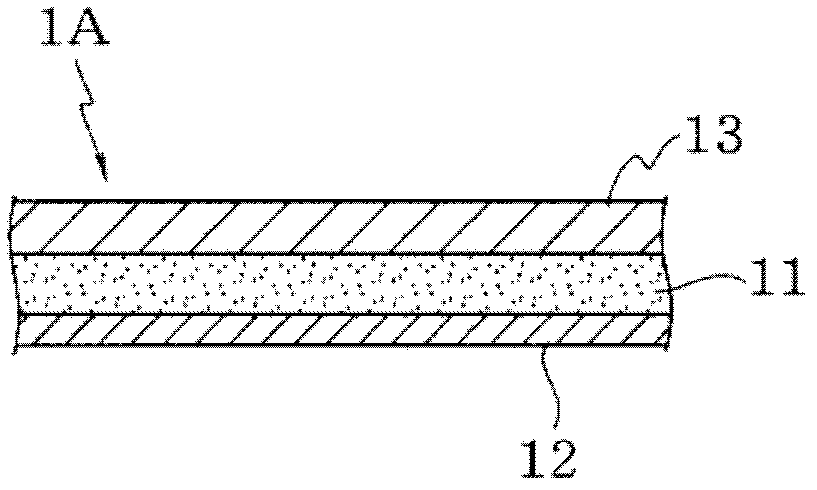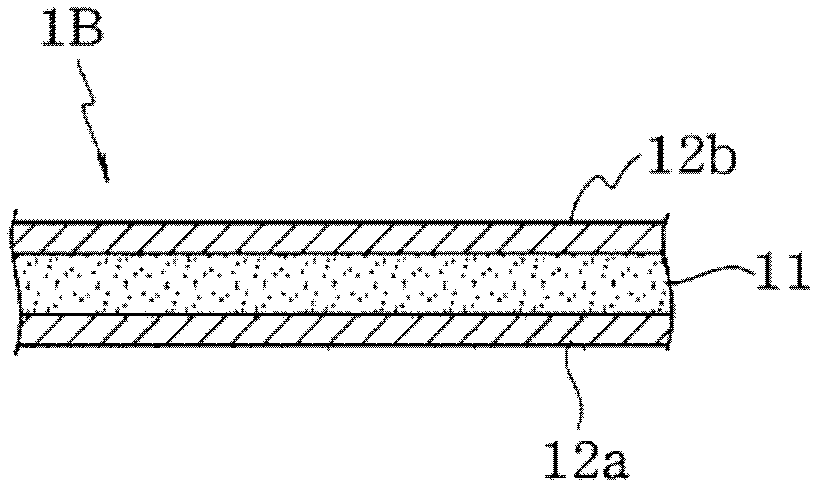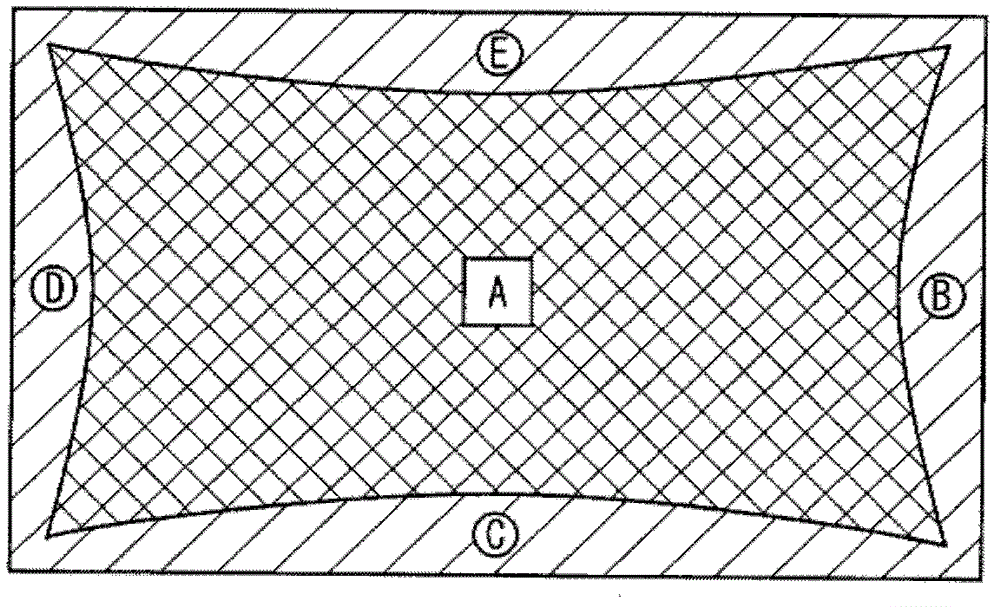An adhesive and adhesion sheet
An adhesive and adhesive layer technology, applied in the directions of adhesives, adhesive types, ester copolymer adhesives, etc., can solve the problems of poor durability, low strength of the adhesive layer, and low bonding density. , to achieve the effect of excellent light leakage resistance and durability, and excellent stress relaxation rate
- Summary
- Abstract
- Description
- Claims
- Application Information
AI Technical Summary
Problems solved by technology
Method used
Image
Examples
Embodiment 1
[0124] 1. Modulation of Polymer (A)
[0125] Into a reaction vessel with a stirrer, a thermometer, a reflux cooler, a dropping device, and a nitrogen introduction pipe, add 97.0 parts by mass of n-butyl acrylate, 3.0 parts by mass of acrylic acid, 200 parts by mass of ethyl acetate, and 2,2' - 0.08 parts by mass of azobisisobutyronitrile, the air in the reaction container was replaced with nitrogen. While stirring in such a nitrogen atmosphere, the temperature of the reaction solution was raised to 60° C., and after reacting for 16 hours, it was cooled to room temperature. Here, a part of the obtained solution was subjected to GPC measurement by the following method, and the generation of the polymer (A) having a weight average molecular weight of 1.5 million was confirmed.
[0126] 2. Modulation of polymer (B)
[0127] In a reaction vessel with a stirrer, a thermometer, a reflux cooler, a dropping device, and a nitrogen introduction pipe, add 85.0 parts by mass of n-butyl a...
Embodiment 2 to 13
[0149] [Examples 2 to 13, Comparative Examples 1 to 5]
[0150] The types and ratios of the monomers constituting the adhesive composition, the types and amounts of the plasticizer, the bonding agent and the silane coupling agent, and the composition of the polymer (A) and the polymer (B) are shown in Table 1 A polarizing plate with an adhesive layer was produced in the same manner as in Example 1 except for the changes shown.
[0151] Here, the weight average molecular weight (Mw) is the weight average molecular weight in terms of polystyrene measured by gel permeation chromatography (GPC) under the following conditions (GPC measurement).
[0152]
[0153] ・GPC measurement device: HLC-8020 manufactured by Tosoh Co., Ltd.
[0154] · GPC column (passed in the following order): manufactured by Tosoh Co., Ltd.
[0155] TSK guard column HXL-H
[0156] TSK gel GMHXL (×2)
[0157] TSK gel G2000HXL
[0158] ·Measurement solvent: tetrahydrofuran
[0159] ·Measurement tempera...
experiment example 1
[0160] [Experimental Example 1] (Measurement of Gel Ratio)
[0161] The polarizing plate used in the production of the polarizing plate with an adhesive layer of the example or the comparative example was replaced, and one side of the polyethylene terephthalate film was used for peeling treatment with a silicone-based release agent. A sheet (manufactured by Lintec Corporation, SP-PET3801, thickness: 38 μm) was used to prepare an adhesive sheet. Specifically, on the exposed adhesive layer on the structure composed of the release sheet / adhesive layer (thickness: 25 μm) obtained from the manufacturing process of the example or the comparative example, it is laminated, and the release sheet and the release process Face to side. In this way, an adhesive sheet having a configuration of release sheet / adhesive layer / release sheet was produced.
[0162] The obtained adhesive sheet was aged at 23° C. and 50% RH for 7 days. Thereafter, the adhesive sheet was made into a sample havin...
PUM
| Property | Measurement | Unit |
|---|---|---|
| gel fraction | aaaaa | aaaaa |
Abstract
Description
Claims
Application Information
 Login to View More
Login to View More - R&D
- Intellectual Property
- Life Sciences
- Materials
- Tech Scout
- Unparalleled Data Quality
- Higher Quality Content
- 60% Fewer Hallucinations
Browse by: Latest US Patents, China's latest patents, Technical Efficacy Thesaurus, Application Domain, Technology Topic, Popular Technical Reports.
© 2025 PatSnap. All rights reserved.Legal|Privacy policy|Modern Slavery Act Transparency Statement|Sitemap|About US| Contact US: help@patsnap.com



